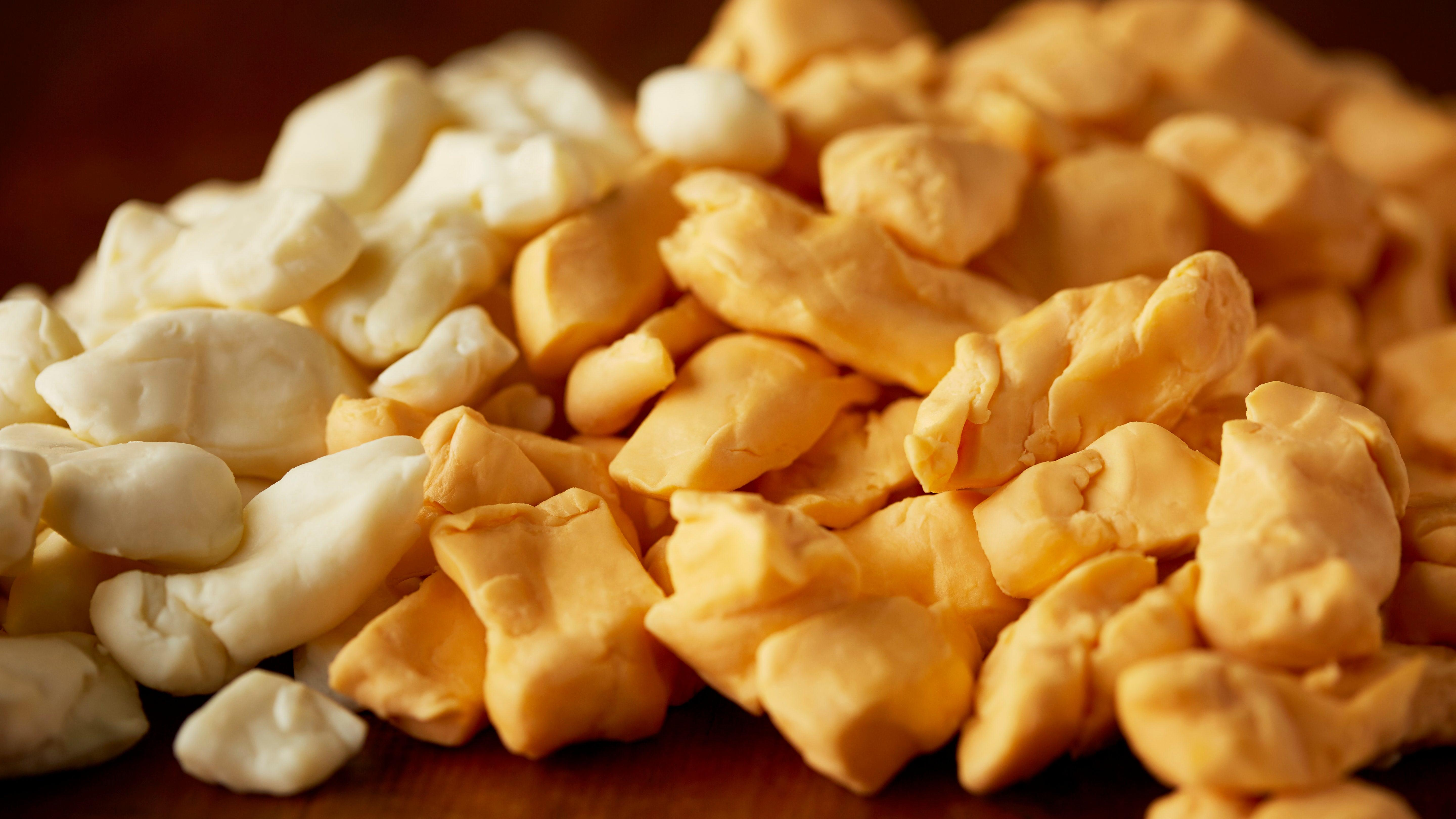Why Do Cheese Curds Squeak?
And more importantly, why do people love squeaky curds so much?
The largest word on a package of Cedar Grove Cheddar Cheese Curds is not "curd" or "cheese." It's not "fresh" or even the company name. The word that stretches the width of the bag, written in conspicuous red block text, is "SQUEAKS."
Cheese curds are distinguished from normal cheddar because they are unaged, separated from the liquid whey, preserving their creamy, milky flavor. High-quality, fresh cheese curds are rubbery to the touch. If you pinch them, they bulge but do not crease. And when you chew them, they squeak like a guinea pig. Suzanne Fanning, chief marketing officer and senior vice president of Wisconsin Cheese (yes, that's a title you can have), explains thusly:
"The squeaking is because of the protein, the elasticized strands of proteins, that are in the cheese curds," she explains. "When they rub against the tooth enamel, that creates the signature squeaking,"
Fanning says she's tried to emulate the sound for marketing videos many times, and the closest she's gotten is by rubbing two inflated balloons together. As grating as that sounds, the high-pitched dolphin-like noise has become the hallmark of a fresh, delectable hunk of young cheese. For best results, buy direct from a dairy farm. If they're on the grocery store shelf, they're probably past their prime.
State of Cheese | Fresh from Wisconsin Cheese on Vimeo.
"You go to the farmers markets on a Saturday morning, and the coolest thing is to get that bag that still has the warm condensation inside," Fanning says. "That's how you know that they were literally up making them at 3 a.m. It's just such a treat."
The squeak doesn't last long. Within 24-48 hours, the lactic acid culture on the cheese starts breaking down the casein, the rubbery protein that rubs against tooth enamel. Cheese curds should be served at room temperature to optimize the sound. After two days, you may be able to revive the squeak by popping the curds in the microwave for a few seconds, but even that trick doesn't last long. Food scientists have tried a gauntlet of freezing, thawing, and microwaving to prolong the squeaking, to varying effect. The Dairy Products Technology Center at California Polytechnic State University has tried to extend the same attributes to reduced-fat cheese, knowing that a squeakless curd will never sell.
Cheese curds are almost exclusively made out of cheddar, and that's because those made out of Monterey Jack, Muenster, or brick cheddar (another Wisconsin specialty) don't squeal as noticeably. Only the freshest, most exclusive cheddar curds squeak, and the thrill of scoring a bag of still-squeakin' ones has created a subculture of exclusivity.
"There's so much mystique around it," Fanning says. "It's one of those things like, when you know, you know. You just can't get it, you can't tell somebody, they have to be in the club. It's like a secret society."
Wisconsin doesn't have exclusive rights to cheese curds—they're liable to be found in any cheesemaking locale, like Quebec or Vermont, and squeaky cheeses are also popular in India and Finland—but Badger Staters are the most dogmatic about the squeaking. After all, this is the home of the CurderBurger. Fanning's ultimate message to those outside of Dairyland is a somber one: Unless you're in Wisconsin, you're likely too far from the source to get a proper sound effect from your cheese,
"It's just a different creature," Fanning says. "There are people in Wisconsin who know that the cheese curds are coming to a certain store at a certain time, and they're in line at 7 a.m. to get those fresh, squeaky cheese curds."
